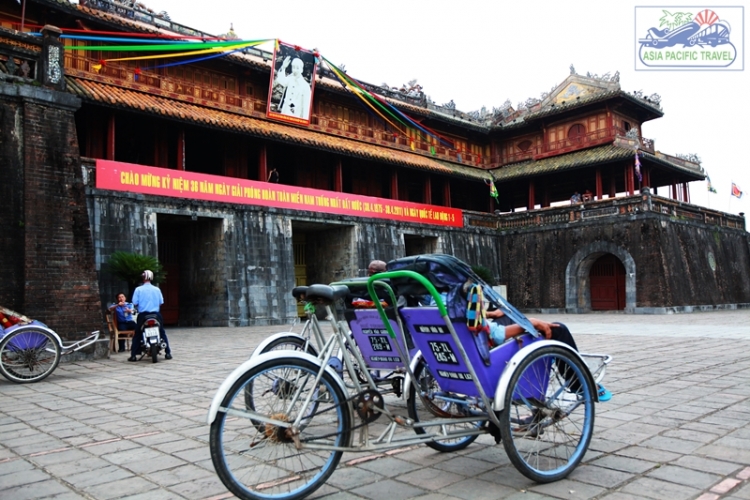From 1558 to 1945, Hue was the imperial capital city of 9 Nguyen Lords, the Tay Son regime and 13 Nguyen dynasties.
During those 4 centuries, Hue became an extensive complex of unique architectural and cultural relics. In 1993, the Hue imperial complex was recognized by UNESCO as a World Cultural Heritage Site. The city has become a mecca of Vietnamese tourism.
On the northern bank of the Huong river in the middle of the city, the magnificent imperial citadel emerges, exhibiting the power of the Nguyen dynasty. The citadel’s royal palaces, monuments and beautiful landscaping retain their imperial solemnity.
The Hue imperial city comprises the Imperial Citadel and the Purple Forbidden City which are surrounded by wide moats. Several buildings were the headquarters of the monarchy and shrines dedicated to kings.
The Forbidden Purple City was reserved exclusively for the royal family and concubines. Only eunuchs could enter. The Imperial Citadel’s design was inspired by Oriental philosophy and Vietnamese tradition. All the structures were built around a main axis. The citadel has four main gates, the south door (Ngo Mon) was exclusively reserved for the emperor.
When you're in Hue, you should also visit the majestic tombs of the Nguyen Kings that lie west of the Imperial Citadel. Located on hills, along the Perfume River, these tombs are typical of Vietnamese architecture, but each reflects the personality and taste of the Emperor.
A large part of Hue’s attractiveness is owed to its beautiful Perfume River and Ngu Binh mountain. Nguyen Xuan Hoa, a Hue resident, said “The Perfume River is a natural wonder of Hue city. It has rare a romantic beauty. Its green waters meander across the plains, through forests and villages like a silk band before entering the Tam Giang Lagoon".
Touring the Perfume River by boat is a wonderful experience. You will enjoy the beautiful sights of the city while listening to royal court music and local folk songs. Truong Tien Bridge over the Perfume River is another iconic landmark of Hue.
Built between 1897 and 1899, it was one of the first bridges built by the French in Indochina. This beautiful bridge and the Perfume River have been a great source of inspiration for poets and songwriters.
Phan Thuan An who has researched Hue culture for several years said for Hue people, Truong Tien Bridge is the primary architectural site of the city and the most beautiful one. The bridge is strongly imprinted in Hue people’s hearts.
Today, the Hue imperial city is also known as a festival city because of its biennial festival which attracts top Vietnamese and foreign performing artists. Authentic architecture, romantic landscapes, and delicate gastronomy make Hue city worth a visit!
Source: VOV








































































































